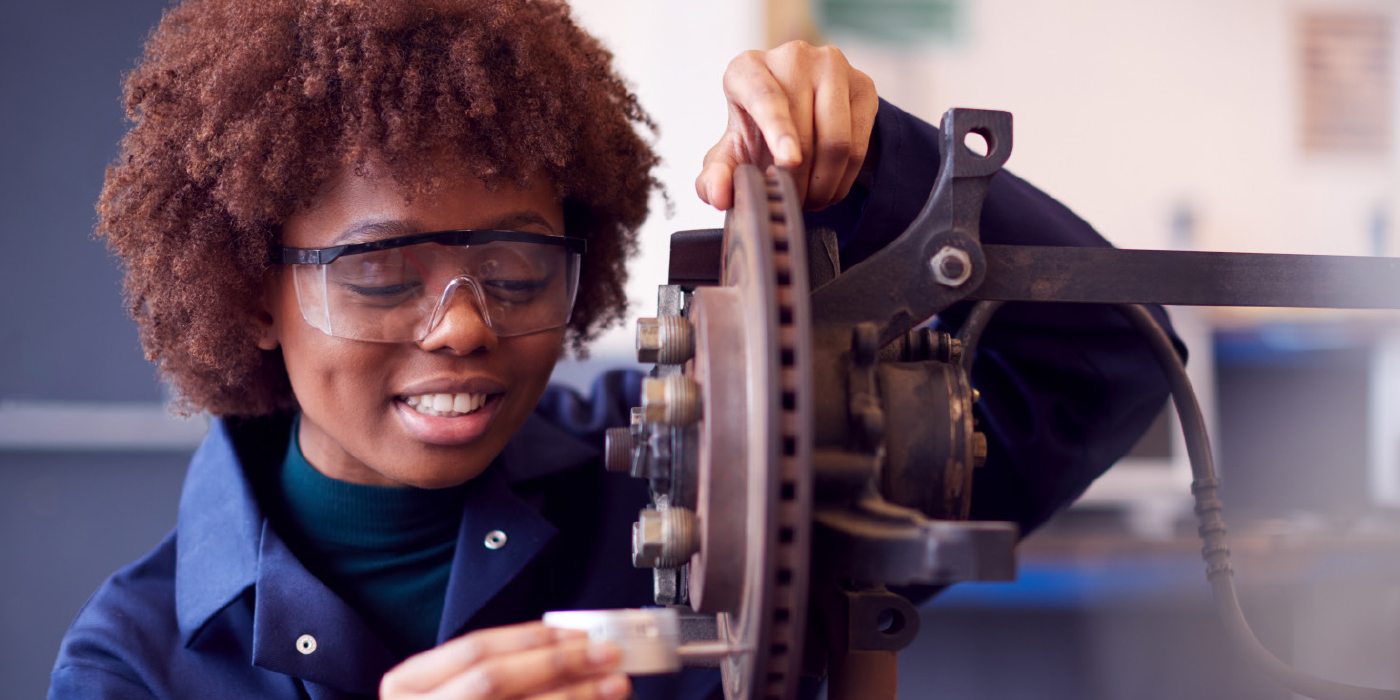Because today’s lighter and more friction-efficient disc brakes have become very sensitive to differences in friction materials, the issue of selecting a quality brake pad is becoming increasingly relevant to the quality-conscious installer.
To illustrate, aftermarket manufacturers of high-performance disc brakes offer literally dozens of racing pads that are qualitatively equal, but vary widely in performance characteristics. A set of “pavement” racing pads may deliver maximum braking power and good pedal response only when they reach high operating temperatures. A set of “dirt” pads, on the other hand, must perform to the same standards while operating at significantly lower temperatures. Less obvious, the main difference between the two types of pads is simply the amount of axle torque each must deal with during an extended braking cycle.
The same types of performance issues can exist in the premium pad market. Also, it’s important to remember that the performance of even the best disc brake pad can be compromised by poor disc brake rotor and caliper preparation.
PAD SELECTION
When selecting brake pads, keep in mind that a savings of $10 on brake pads on a $200 brake service amounts to a savings of only 5 percent for the customer. While 5 percent might seem like a “big number” from a marketing standpoint, it will hardly pay for the comebacks caused by using a poor-performing brake pad or pad installation.
Most pad-related customer complaints usually fall into four categories: 1) noise; 2) pedal response; 3) service life; and 4) overall braking performance. Most owners hate annoying temperature- and humidity-sensitive brake squeaks and chirps.
Next, since most braking situations fall under the mild to moderate category, pedal feel and response are very important. Service life, on the other hand, is a primary factor if the vehicle is driven in a commercial or high-annual-mileage situation. Service life may also be coupled with braking performance, especially with trucks and SUVs used in towing or load-hauling situations.
Last, overall braking performance, which includes stopping power and resistance to heat fade, isn’t normally a consideration in the consumer market. It does become a consideration, however, if the vehicle is driven in mountainous areas or subjected to high-speed driving conditions such as police or emergency vehicle use.
In any case, real-world experience is the best evaluator of pad performance. By observing how various pad materials perform in different vehicle applications and operating situations and by communicating with your friction supplier, you can recommend the best pad for the application. As with any technical endeavor, product-specific knowledge is a characteristic that separates the amateur from the true automotive service professional.
Rotor and Pad Interaction
Because a new rotor is designed to be compatible with a variety of disc pad friction materials, a brand-new, out-of-the-box rotor is usually supplied with a very smooth, mirror-like finish. But, this usually does not mean that it is ready to go right on the vehicle.
Even if the rotor comes out of the box in plastic wrap, it still needs to be cleaned with soapy water or solvent. This process ensures that machining oil and metal chips are removed from the rotor’s surface. The oil can contaminate the new pads and cause increased stopping distances.
Small particles of metal can embed themselves in the brake pad itself. In some cases, these noise complaints can be remedied only by re-machining a smooth surface on the rotor and installing a new set of brake pads. Residual torn metal can be removed by using a variety of rotor surface refinishing discs and pads available for that purpose. Last, it’s extremely important to wash the rotor in a soap-and-water until metallic dust can no longer be detected by wiping a white shop towel across the rotor’s surface.
The key point of any surface refinishing procedure is to minimize the effects of the spiral lathe cut and to remove jagged metal that might embed in the friction lining. To ensure the smoothest surface possible, the “phonograph record” effect can be minimized by using a light final cut of, let’s say, 0.002 inches per side, at the lathe’s minimum feed rate.













